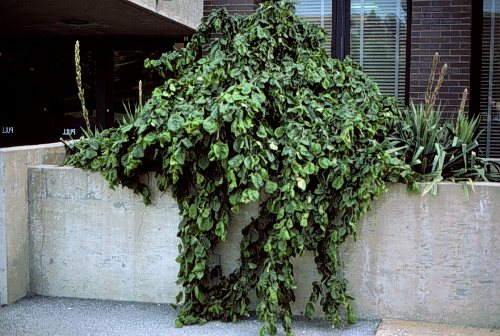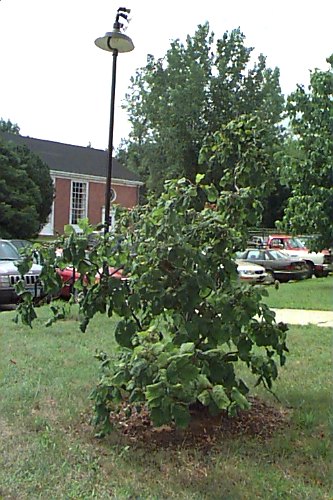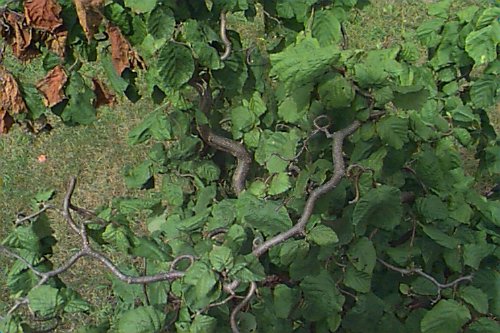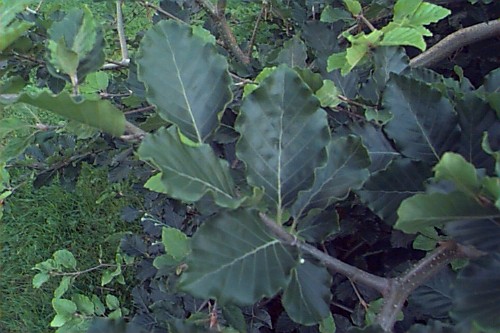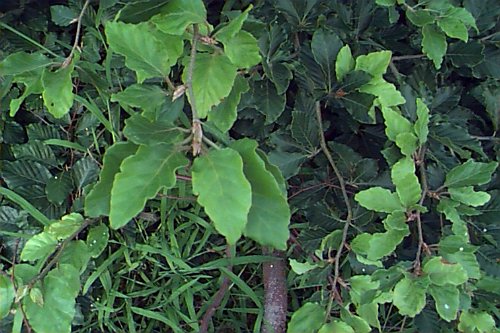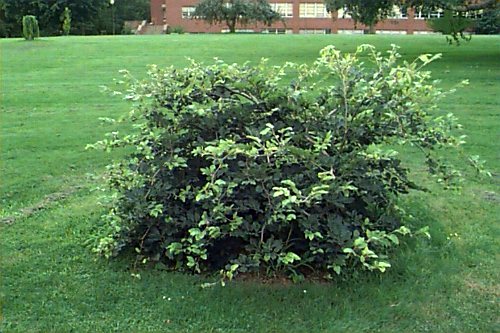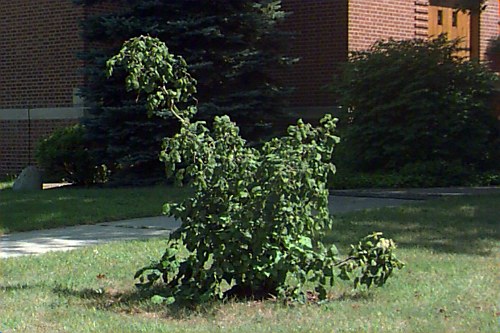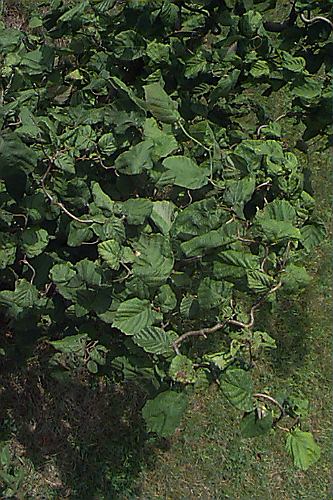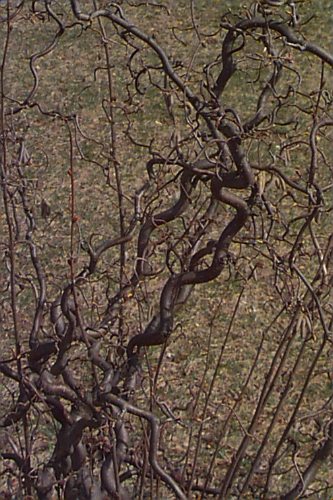Corylus avellana
European Filbert, Cobnut
Betulaceae
ExpandHabitat
- native to Europe, western Asia and northern Africa
- zone 4
Habit and Form
- a deciduous small tree or large shrub
- typically 12' to 15' tall as a mature plant
- most often develops numerous upright stems from the roots, creating a thicket
- generally maintains an overall upright shape with a rounded head
Summer Foliage
- alternate, simple leaves
- 2" to 4" long and 1.5' to 3" wide
- broadly ovate in shape
- doubly serrate margins
- leaves slightly pubescent above, pubescent below
- leaves mature to dark green
Autumn Foliage
- reddish
Flowers
- monoecious , with male and female flowers
- male flowers are large 2" to 3" pendulous catkins in 3's mostly
- blooming in late winter and early spring
- female flowers are small and inconspicuous
Fruit
- a nut about 0.75" long, set in an involucre
- the distinctive husks (involucre) are somewhat noticeable in late summer and autumn
- fruit (nut) is edible and is grown as a commercial crop
Bark
- pale brown or gray brown
- not a significant ornamental feature
- smooth on older stems
Culture
- an adaptable plant
- does well on poor, dry soils
- full sun is best; also tolerates shade well
- selected clones are grafted and root suckers may need to be removed regularly
Landscape Use
- as a specimen
- in small groupings
- for difficult, dry sites
- for edible fruit
- as a barrier
- for naturalistic areas
- for hedging
Liabilities
- most notable liability is with selections that are grafted onto seedling stocks. The understocks usually sucker badly, creating a maintenance need.
ID Features
- alternate leaf arrangement
- pubescent leaves
- suckering habit
- nut with an involucre covering
- large male catkins in spring
- twigs are bristly-hairy and rough to the touch
Propagation
- seed requires warn then cold stratification
- cuttings are very difficult
- selections are grafted onto seedlings
Cultivars/Varieties
'Aurea' - A relatively weak grower with bright yellow foliage in the spring which turns dull green by mid-summer. The branches are also yellowish.
'Contorta' - The most popular C. avellana grown in the United States and often the only form available from nurseries. Known as Harry Lauder's Walking Stick, it has curled, twisted and contorted branches. Popular specimen and accent plant. Reaches heights of 6' to 8' with similar or greater spread. It is often grafted and suckers badly from the rootstock -- buy own-root plants if possible. The plant produces catkins in winter, but no fruit. 'Contorta' may actually be at its best in winter, when the contorted branches are easily viewed without the presence of foliage.
'Fusco-rubra' - Leaves are brownish-red to dull purple. Not very commonly available, but a large vigorous plant to 15' tall. 'Rote Zeller' is another purple-leaved C. avellana seen in the literature, but C. maxima 'Purpurea' (also seen as C. m. var. purpurea) is by far the most commonly available purple-leaved filbert.
'Pendula' - A weeping form grafted on seedlings at around 5' above the ground. Reaches about 8' tall and 15' wide. Not very readily available. The branches weep strongly to the ground.
